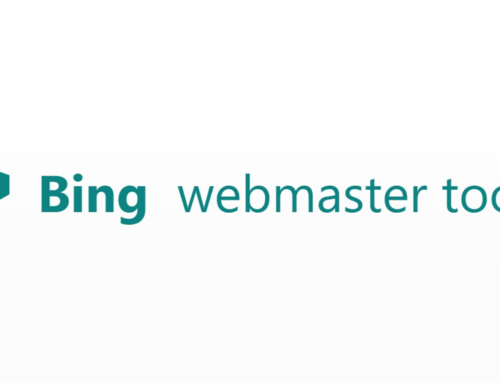Better Sitemaps For Super SEO Rankings
Struggling to climb the SEO ladder? A well-crafted sitemap is your secret weapon. These blueprints guide search engines through your site, making every page count. This article will show you how to create sitemaps that boost your rankings, step by step.
Get ready to see results!
Key Takeaways
- Sitemaps act like maps for search engines, helping them find all parts of a website.
- There are two main types of sitemaps: XML for search engines and HTML for users.
- Keeping your sitemap updated can boost your site’s SEO by ensuring search engines index new pages quickly.
- Using tools such as Google Search Console helps in creating and managing effective sitemaps easily.
- Avoiding common mistakes like including blocked pages or not updating regularly is crucial for maintaining good SEO rankings.
Understanding Sitemaps
Sitemaps serve as a map for websites, guiding search engines through each page. They come in two main types – XML and HTML – making sure search engines like Google can find and understand your site’s content with ease.
Definition and Importance of Sitemaps
A sitemap acts as a map of a website, guiding search engines through all the content available. It’s like a directory that tells search engines which pages are most important. This is crucial for SEO because it helps search engines find and index new pages quickly.
Especially for new websites or big online shops with lots of products, having a sitemap can make a big difference in how easily people find their pages.
Having an up-to-date sitemap lets website owners check if all their content is being seen by search engines. If there’s a gap between what should be indexed and what is actually indexed, it could highlight problems like repeated content or issues with indexing budgets.
For SEO success, using tools to create and manage these roadmaps effectively ensures that high-priority pages stand out to Google and other search engines, improving site visibility and user traffic.
Types of Sitemaps: XML and HTML
Moving from what sitemaps are and why they matter, we delve into the two main kinds: XML and HTML.
XML sitemaps help search engines–like Google–find and index your website’s pages more easily. Think of them as a map for robots, guiding them through all the nooks and crannies of your site.
These are crucial for SEO because they tell search engines about the pages on your site that might not be discovered otherwise. They’re not just any maps; they can handle up to 50MB of data, which is loads of information about your site’s structure.
On the other hand, HTML sitemaps are designed for humans. While they’re not necessary for search engine bots anymore, thanks to their reliance on XML versions, HTML sitemaps improve user experience by helping visitors navigate your site.
By providing a clear layout of all linked pages accessible from one spot, users can find what they need without getting lost or frustrated.
Both types play unique roles in making websites both user-friendly and easy to crawl—a win-win situation in web design and SEO strategy.
The Role of Sitemaps in SEO
Sitemaps tell search engines about the pages on a website. They make sure search engines find all your important pages.
How Sitemaps boost SEO rankings
Sitemaps act like maps for search engines, showing them all the streets and alleys of a website. They make sure search engines can find and understand every part of a site. This is especially useful for new sites or big online shops with lots of pages.
By using sitemaps, websites tell Google and other search engines about their most crucial places.
They allow web crawlers to pick up every important page, even those that might not be easy to find through regular browsing. For large websites, breaking sitemaps into smaller sections helps ensure nothing gets missed.
A well-structured XML sitemap can significantly improve a site’s visibility in search engine results by highlighting key areas and updates efficiently.
The necessity of a sitemap for effective SEO
Boosting SEO rankings is just the start. Having a sitemap is key for SEO success. Search engines use sitemaps to understand your website’s structure and to crawl it more effectively.
This means they find and index your pages faster, which can improve your site’s visibility in search results. With tools like Google Search Console Tools and Bing Webmaster Tools, creating a sitemap becomes an easy task.
A well-planned sitemap also helps manage your site’s crawl budget by prioritising important pages for search engines to crawl first. By revealing issues with duplicate content, it ensures that search engines are indexing the right pages.
As such, tools like Yoast play a crucial role in generating efficient XML sitemaps that support these efforts seamlessly, making sure your website stands out online.
Best Practices for Optimising Sitemaps
Creating a great sitemap makes it easy for search engines to find and rank your website. Keep your sitemap clean and up-to-date, using tools like Google Search Console or Screaming Frog to spot any issues.
Tips for creating effective sitemaps
Making a good sitemap can really boost your website’s SEO. It helps search engines find and understand your content better. Here are some practical tips to create effective sitemaps:
- Use the right tools like Yoast SEO or Google XML Sitemaps. These make building a sitemap much easier.
- Keep your sitemap updated. Add new pages and remove old ones regularly to reflect your current site.
- Break down large sitemaps for big websites. This makes it simpler for search engines to crawl through them.
- Include only important URLs. Don’t waste space on duplicate or irrelevant pages.
- Set the “last modified” date for URLs in your sitemap to help search engines see what’s changed.
- Submit your sitemap to Google using Google Search Console. This tells Google where to find it.
- Check for errors in Google Search Console after submission and fix any that show up.
- Use a logical structure in your HTML sitemaps for users, like a table of contents.
- For e – commerce sites, consider adding an image sitemap to boost visibility of your products in search results.
These steps will make sure your sitemap is tidy, up-to-date, and useful for both users and search engines alike!
Common mistakes to avoid
Creating sitemaps is a key step in SEO strategy. Yet, many people make mistakes that can hurt their SEO rankings. Let’s look at some common errors to steer clear of.
- Not checking sitemaps for mistakes – Always review your sitemaps for any indexing issues or errors. Ignoring this step can keep your site from showing up in search results.
- Including blocked pages – Make sure you don’t add pages with a “noindex” tag or those you’ve blocked from search engines to your sitemap.
- Keeping large sitemaps as one – Break down big sitemaps into smaller, more manageable ones. This makes it easier for search engines to scan through your site.
- Neglecting the root directory’s cleanliness – A messy root directory can harm your site’s overall SEO health and its position in search outcomes.
- Not updating sitemaps regularly – As you add, remove, or update pages, make sure your sitemap reflects these changes to stay current with search engines.
- Using only XML Sitemaps – Don’t forget about HTML sitemaps; they help users navigate your site and improve the crawling of pages by search engines.
- Forgetting image and video Sitemaps – If your site has a lot of media content, using image and video Sitemaps can boost its visibility in searches.
- Ignoring priority settings – Use the priority feature in XML Sitemaps to highlight the most important pages on your website to search engines.
Now let’s move on to how tools can assist in creating and managing effective sitemaps.
SEO Case Studies Highlighting the Importance of Sitemaps
Several SEO case studies have shown just how crucial sitemaps are for websites wanting to rank well in search engines. A study on a new online store revealed that after submitting an XML sitemap to search engines, its pages started appearing in search results much faster than before.
This was especially important since the site had very few external links pointing to it at first. The quick indexing of the website’s pages meant that potential customers could find their products sooner, leading to early sales and visibility.
Another real-world example involved a major ecommerce platform with thousands of pages. By breaking down their large sitemap into smaller, more manageable ones, they improved the efficiency of search engine crawlers across their site.
This action not only helped with quicker page detection but also allowed for more precise tracking of which pages were being indexed. As a result, they saw a significant improvement in their SEO performance—highlighting the power of well-structured sitemaps in guiding search engines through vast amounts of content efficiently.
Tools to Create and Manage Sitemaps
Moving from the significance of sitemaps demonstrated by SEO case studies, it’s time to explore the tools that can make sitemap creation and management a breeze. These tools simplify the process, making it easy for anyone to improve their site’s SEO.
- Google Search Console Tools – This tool allows you to submit your sitemap directly to Google. It helps ensure that your website gets noticed by one of the largest search engines in the world. Plus, it’s free!
- Bing Webmaster Tools – Similar to Google’s offering, this tool lets you submit sitemaps to Bing. It’s important not to overlook other search engines outside of Google because they contribute to your overall web visibility.
- Yoast SEO plugin for WordPress – With automatic updates for your sitemaps, Yoast makes managing a WordPress site much easier. The plugin can generate a sitemap automatically and keep it updated with any new content you publish.
- XML-Sitemaps.com – For those without WordPress, XML-Sitemaps.com provides an easy way to generate a sitemap online. You simply enter your website URL and let the tool do its work.
- Screaming Frog SEO Spider – This desktop programme crawls websites and generates sitemaps among many other functions. It is perfect for more detailed SEO analysis and large websites that might need more than a basic sitemap.
- Sitemap Writer Pro – Offering more control over your sitemap generation, this software is ideal for those who need customised options for their websites.
- A1 Sitemap Generator – This tool offers comprehensive scanning of your website to create detailed sitemaps in various formats including XML, HTML, and more.
- Pulling Sitemaps from Websites Not Owned By You – While not a tool per se, understanding how competitors structure their sites can give valuable insights into improving your own site architecture.
Each of these tools has its unique benefits depending on what you need for your website—whether it’s simplicity, detailed analysis or flexibility in generating different types of sitemaps like XML or HTML ones.
Conclusion
Creating the perfect sitemap can really lift your website’s SEO game. It’s like giving search engines a map so they can easily find and show off your content. Making sure you’ve got things set up with Google Search Console is key.
And remember, keeping your site’s layout simple for search spiders while making updates only when needed helps you stay on their good side. Get it right, and watch as your site climbs up those rankings!
FAQs
1. Why are sitemaps important for SEO?
Sitemaps, especially XML sitemaps, play a crucial role in SEO because they help search engines like Google understand the structure of your site. This makes it easier for them to crawl and index your pages, potentially boosting your rankings.
2. What type of sitemap is most important for SEO?
XML sitemaps are the gold standard for SEO purposes. They provide search engines with a roadmap of all your important pages and posts, ensuring that nothing gets missed during indexing.
3. Can image sitemaps improve my website’s SEO?
Yes, indeed! Image sitemaps can significantly enhance your site’s visibility by making sure search engines can find and index all the images you’ve used. This could lead to better rankings in image searches.
4. Is having a sitemap necessary for every website?
While not strictly required, having a well-structured sitemap is considered best practice in SEO circles. It aids search engines in efficiently crawling your site and can be particularly beneficial for large websites or those with complex architectures.
5. How does updating my sitemap affect my SEO rankings?
Regularly updating your XML Sitemap – especially after adding new content or making changes to existing pages – signals to search engines that your site is active and up-to-date, which might give you an edge over competitors who neglect this aspect.
6. Are there any tools to generate an SEO-friendly sitemap easily?
Absolutely! There are several free and paid tools available online that can automatically generate an XML Sitemap for you – All In One SEO and Yoast being among the most popular options within WordPress plugins; they even update dynamically as you add new content.































